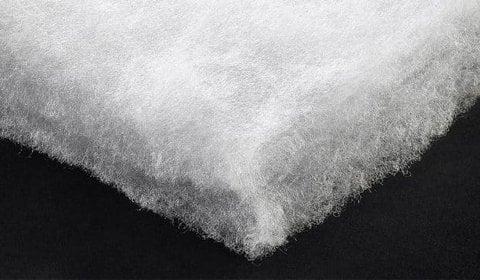The Ultimate Guide to Choosing an Ultralight Synthetic Jacket
Posted by Andy Neil on Aug 14, 2025

For decades, outdoor enthusiasts have debated the merits of down vs. synthetic insulation. Traditionally, down offered superior warmth-to-weight and packability, but it failed to insulate when wet. Synthetic jackets, while bulkier and heavier, keep you warm even in rain or damp conditions. Today, that gap is narrowing – hydrophobic-treated down has improved its wet-weather performance, and advances in fibre technology have allowed synthetic insulation to mimic down’s loft with much lower weight and bulk than before.
This guide focuses on ultralight synthetic insulated jackets for hiking, backpacking, and mountaineering. We’ll break down the types of synthetic insulation available, how to judge a jacket’s warmth, what features to look for, how synthetic compares to down, and tips on care and maintenance. By understanding these factors, you can choose the best ultralight synthetic jacket to keep you warm and dry on your adventures.
Types of Synthetic Insulation
Modern synthetic insulation comes in a few different forms, each engineered for specific performance characteristics. The three main categories are Sheet (mat) Insulation, Active Insulation, and Loose-fill (down-mimic) Insulation. All types share the same basic principle as down: creating tiny air pockets that trap heat. However, their construction and use cases differ:
(Continuous or Batting)
Sheet or “mat” insulation is a continuous layer of synthetic fibre used inside jackets. Once the standard form of fill, it’s still common today (e.g. PrimaLoft Gold). It’s warm for its weight, durable, and insulates even when damp. Unlike down, sheet insulation can often be sewn into a jacket without many baffles, which reduces cold spots and weight.
However, it’s less breathable, trapping heat and moisture. It is best for static warmth in cold weather, such as belaying, or moderate activity, where maximum insulation is needed.
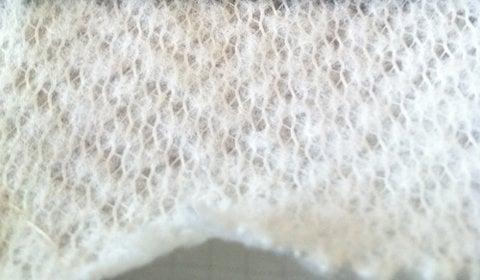
Active Insulation
(High Breathability)
Active insulation uses modern synthetic fills engineered for breathability and moisture management in high-output or stop-and-go activities. Examples include Polartec Alpha and OR’s VerticalX Octa. They’re roughly half the warmth (by weight) as the equivalent sheet insulation, but allow far more airflow, letting sweat and heat escape during intense movement. Ideal for alpine climbing, ski touring, or fast hiking, they work well as “thermoregulating” midlayers you can wear across varying activity levels. The trade-off: they’re less warm than fully insulated jackets when you’re at rest.
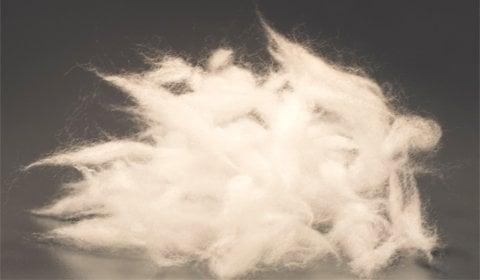
Loose-Fill Insulation
(Down-Like Puff)
Loose-fill synthetic insulation uses tiny clustered fibres to mimic down’s loft, and compressibility while keeping synthetic’s moisture resistance. Found in jackets like OR’s SuperStrand, it’s blown into baffles like down and often feels similar to a down “puffy”. They tend to have quilted sections (baffles) to keep the fill evenly distributed. In terms of warmth, the best loose-fill synthetics are roughly equivalent to mid-grade down 550–600 fill-power. They rebound well after compression and keep working when wet. They are usually slightly heavier and less packable than down, but technology is narrowing the gap. One bonus: if torn, the fibres don’t leak out as quickly, so warmth is maintained until repairs are made.
Warmth and Fill Weight
When choosing any insulated jacket, a key question is “How warm will it be?” For synthetic jackets, one of the simplest indicators of warmth is the insulation weight, usually expressed in grams per square meter (g/m²). While factors like fabric, fit, and construction also affect warmth, the fill weight is a useful rule of thumb:
● Ultralight Active or Midlayer (50–100 g/m²) – Often used in active insulation or light midlayers, comparable in warmth to a fleece but more wind-resistant and compressible. Great for high-output activities or mild weather (e.g. 60–80 g/m² Polartec Alpha).
● All-Purpose Insulation (100–150 g/m²) – The versatile “do-it-all” range for 3-season use. Light enough to layer or pack easily, yet warm enough for breaks or cool camp evenings. Around 120 g/m² is common for general hiking or climbing jackets.
● Expedition / Static Warmth (150–200+ g/m²) – Maximum warmth for cold, low-movement situations like belaying or winter camping. Can use single or double layers (e.g. 2 × 100 g/m²). Bulky but essential for sub-freezing conditions.
Remember that these numbers are a guideline. The quality of the insulation matters too – advanced insulations might give more warmth per gram. Additionally, a jacket’s design (e.g. use of reflective linings, windproof fabrics, etc.) can enhance how warm it feels beyond just the fill weight.
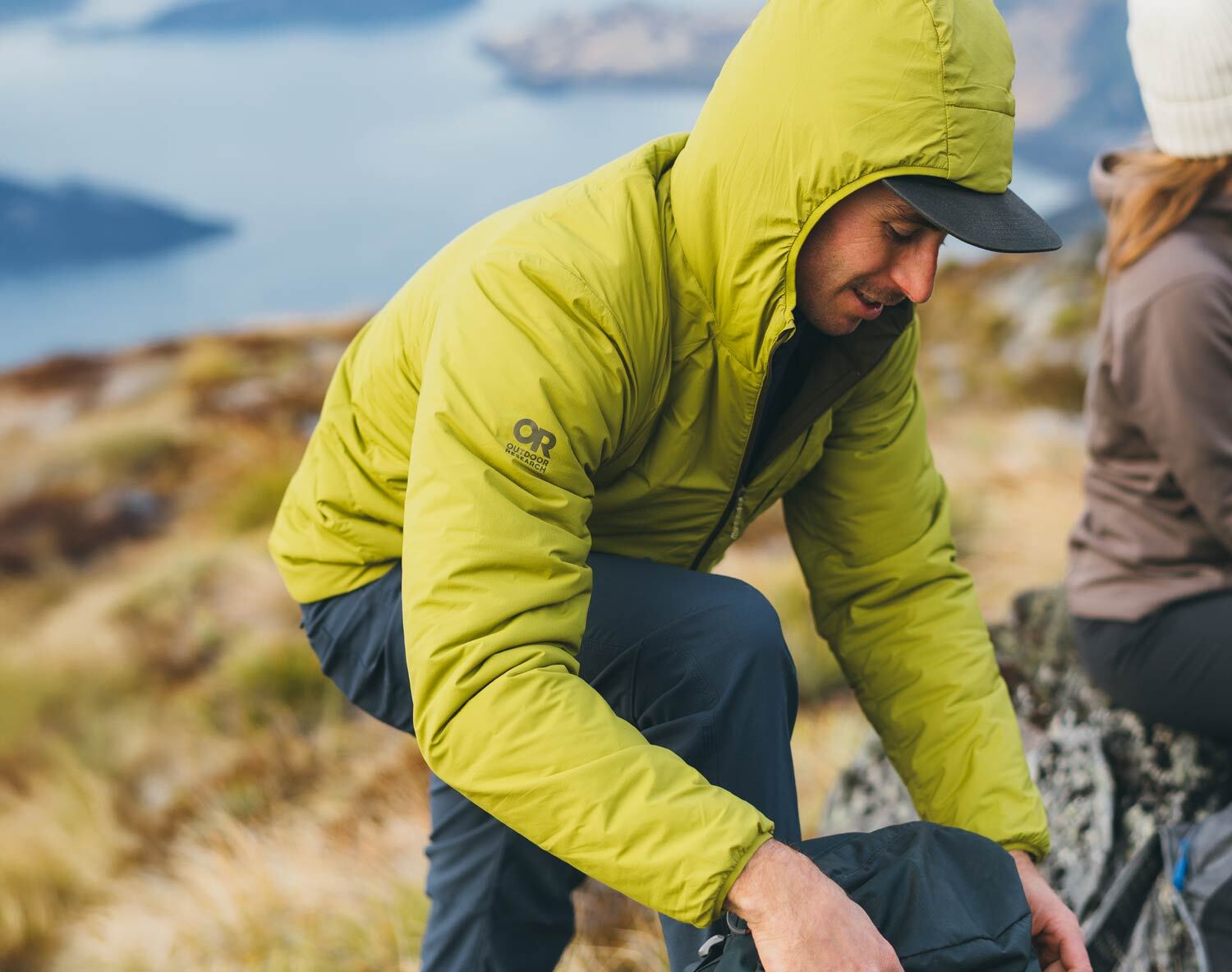
Key Features to Consider
When evaluating an ultralight synthetic jacket, it’s important to think about how you will use it most of the time. Alpine climbers have different needs than casual hikers. Here are the main features and design elements to consider:

Hood & Adjustability – A hood adds warmth and weather protection, but also weight. If layering under a shell, you may not need one; if it’s your main outer layer, it’s worth having. Climbers may want helmet-compatible hoods with good adjustment; casual users might prefer a smaller, snug fit. Look for drawcords, toggles, and brims to seal out drafts.
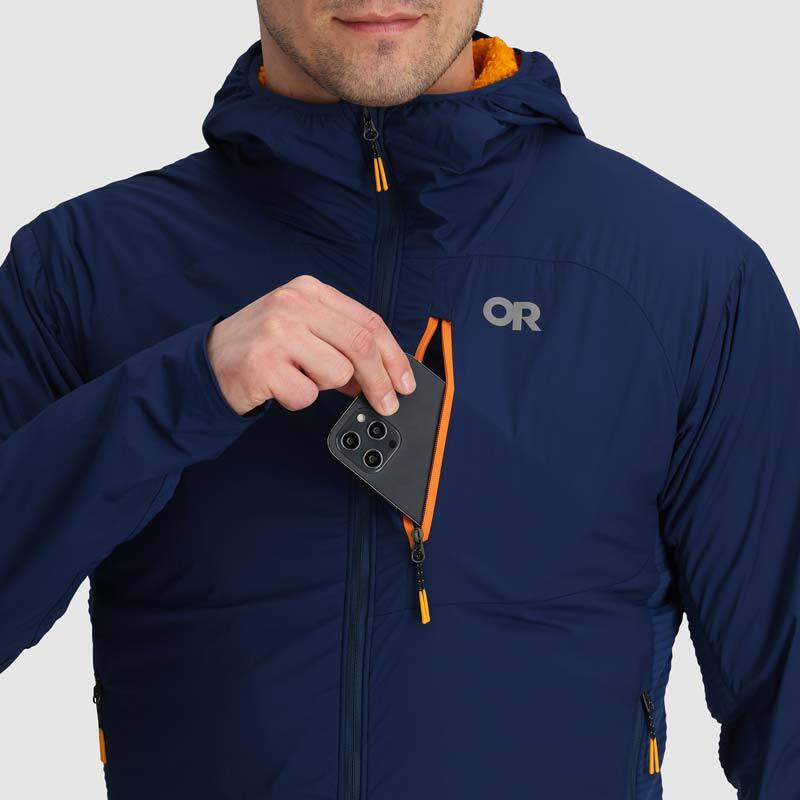
Pocket Placement & Number – High hand pockets stay usable with a pack or harness; lower pockets suit casual use. Internal drop-in pockets are great for gloves or keeping water or water filters from freezing. Ultralight models often have just one chest pocket (sometimes doubling as a stuff sack) to save weight.
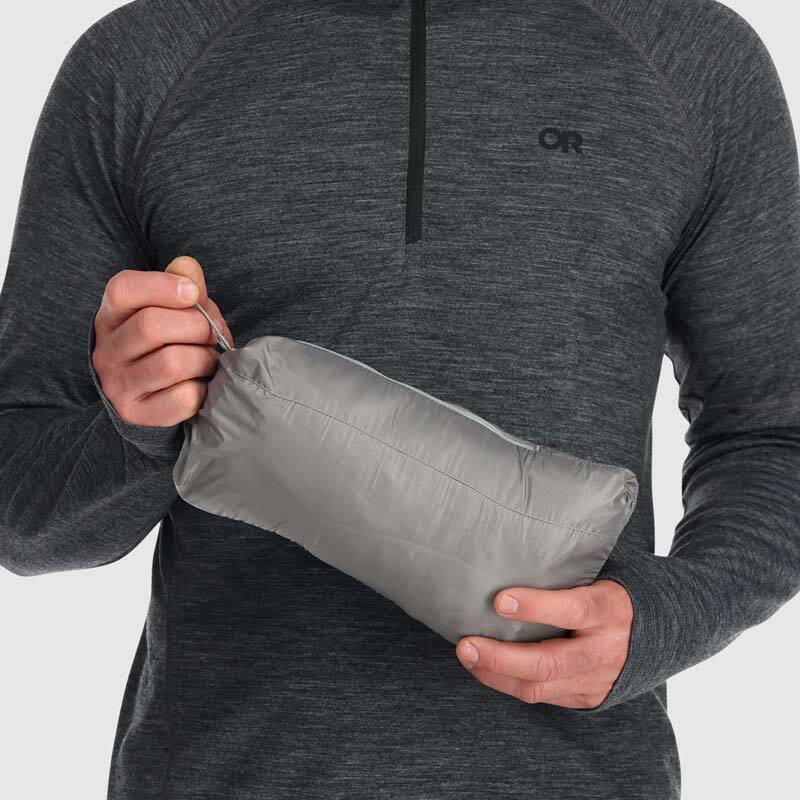
Compression & Packability – Many pack into a pocket or stuff sack; midweight synthetics can compress to about a 1-litre water bottle. Down packs smaller, but synthetics are improving.
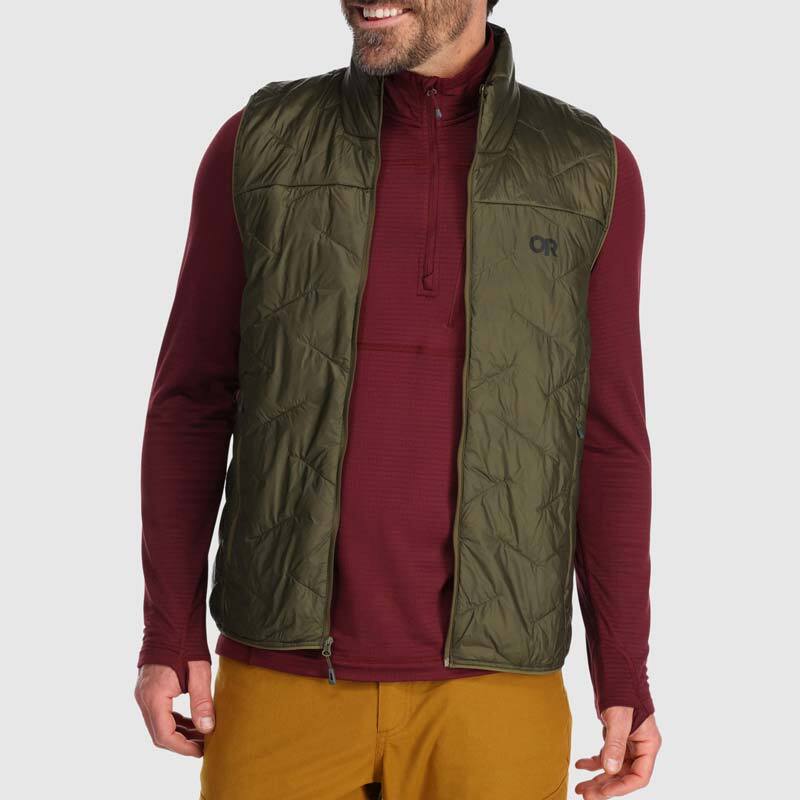
Fit & Layering – Slim “midlayer” cuts fit under shells; roomier “outer layer” cuts fit over other layers. Look for articulated sleeves, a good range of motion, and longer hems for coverage. Adjustable cuffs and hem drawcords help trap warmth.
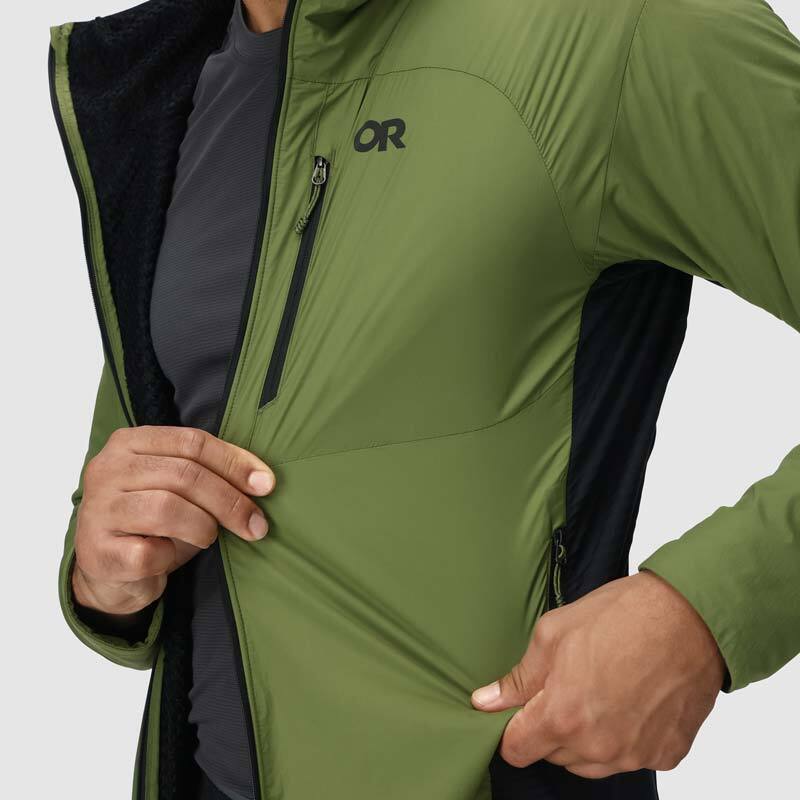
Shell Fabric & Weather Resistance – Thinner shells (10–20D) are light and packable but less durable; thicker shells (30–40D+) offer toughness and better wind/water resistance. Most have a DWR finish; some use waterproof/breathable shells for full protection, at the cost of extra weight.
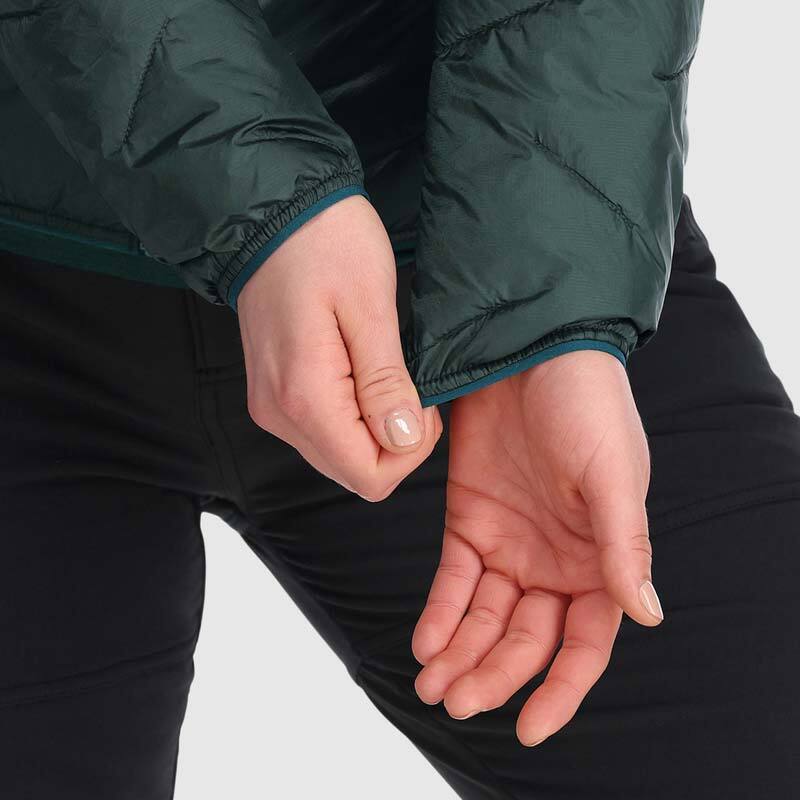
Special Features – Options include two-way zippers, draft tubes, adjustable cuffs, fleece-lined collars/pockets.
Synthetic vs. Down: A Comparison
It’s helpful to compare synthetic insulation to natural down to understand the strengths of each. Neither is categorically “better” – they have different advantages, and many adventurers will own both types for different conditions.
Synthetic – Pros
● Performs When Wet – The biggest selling point, synthetic jackets will retain much of their insulating ability even if they get wet. A good synthetic will still insulate at 80–95% of its warmth when soaked and will dry faster than down. Great for damp climates, winter rain, or sweaty stop-and-go activities.
● Lower Cost – Synthetic insulation is generally cheaper compared to down for comparable warmth. So if you're on a budget, Synthetic wins out.
● Hypoallergenic & Vegan –Synthetic fibres are naturally hypoallergenic, making them a safe choice for those with down sensitivities. They’re also free from animal products, appealing to anyone who avoids down for ethical reasons.
● Easy Care – Synthetic jackets are simple to maintain: just machine-wash and dry, tumble dry, or hang them on the line. In contrast, down requires special cleaning products, particularly if restoring its hydrophobic properties, and they are a nightmare to dry.
● Practical Durability – If torn, a synthetic jacket will lose less (if any) insulation, whereas down will quickly shed feathers, dramatically lowering the jacket's thermal properties.
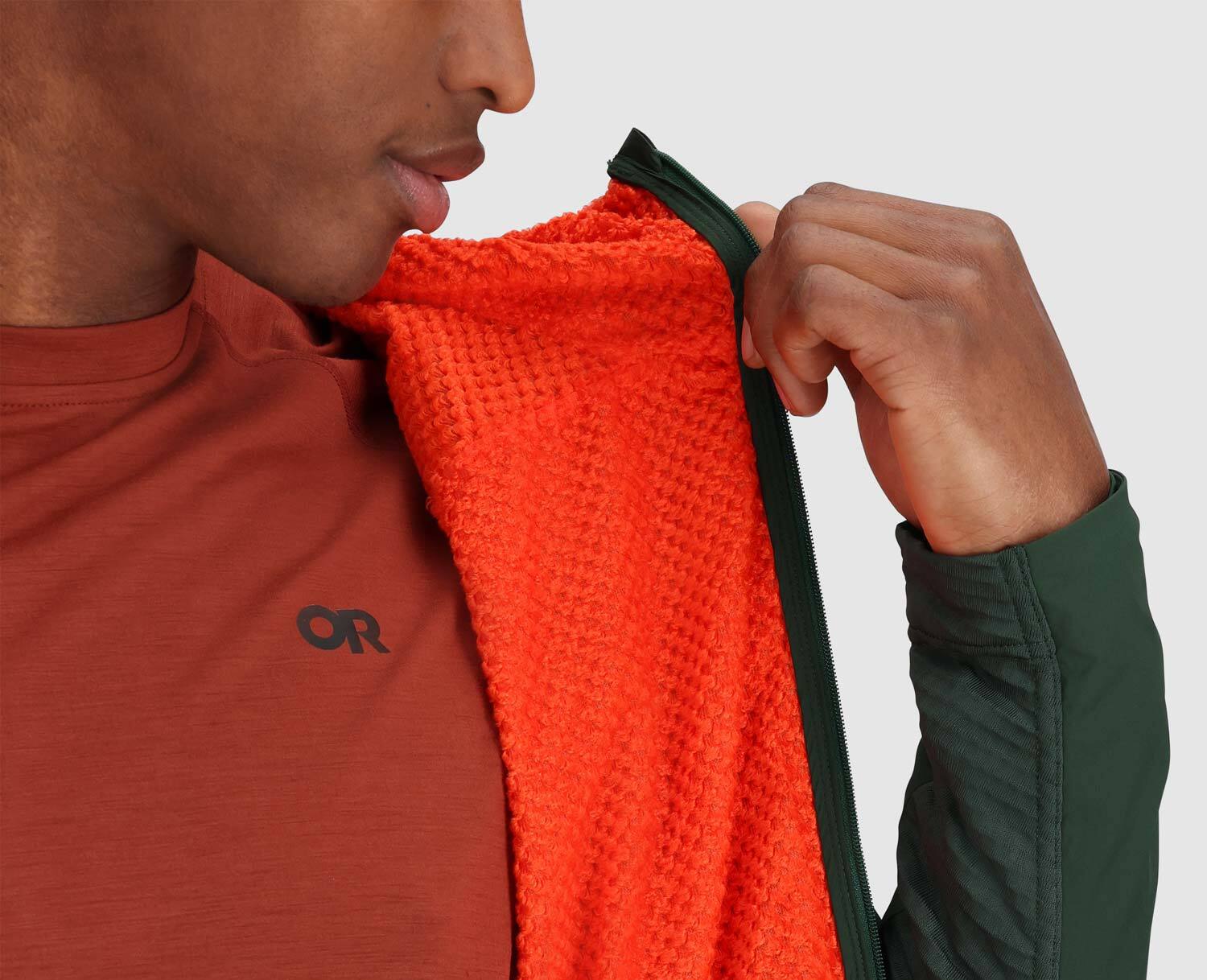
Synthetic – Cons
● Heavier & Bulkier for the Warmth –By and large, synthetic insulation has a lower warmth-to-weight ratio than down. A synthetic jacket (for the same temperature use) will often weigh more and will almost certainly not compress as small as a down jacket. If minimising weight or pack size is critical, down still holds an edge.
● Gradual Degradation – Despite being a naturally biodegradable product, if treated right, it will last for a lifetime; however, synthetic fibres break down over the years of compression and use, reducing loft and, therefore, thermal properties.
● Slightly Less Breathable – Traditional sheet and loose-fill synthetics can trap heat and moisture compared to down. However, Active insulation is by far more breathable than down.
In summary: Choose down for maximum warmth-to-weight in cold, dry conditions where packability matters most. Choose synthetic for wet or changeable weather, easier care, lower cost, and dependable warmth even when damp. Many use both down for deep winter or summit pushes, synthetic for wet days or active use, and hybrids combine each where they perform best. Use the right tool for the job, and you’ll stay warm and comfortable.
Care and Maintenance Tips for Synthetic Jackets
● Wash When Needed – You don’t have to wash synthetic jackets after every trip. Spot clean small marks with a damp cloth and mild soap, and save full washes for when the jacket is truly dirty. Always check the care label before washing.
● Washing – Most synthetic jackets are machine-washable. Use a gentle cycle with cold or warm water (no fabric softener). Zip up all zippers and close Velcro to avoid snags. Washing the jacket on its own or with similar lightweight items reduces abrasion.
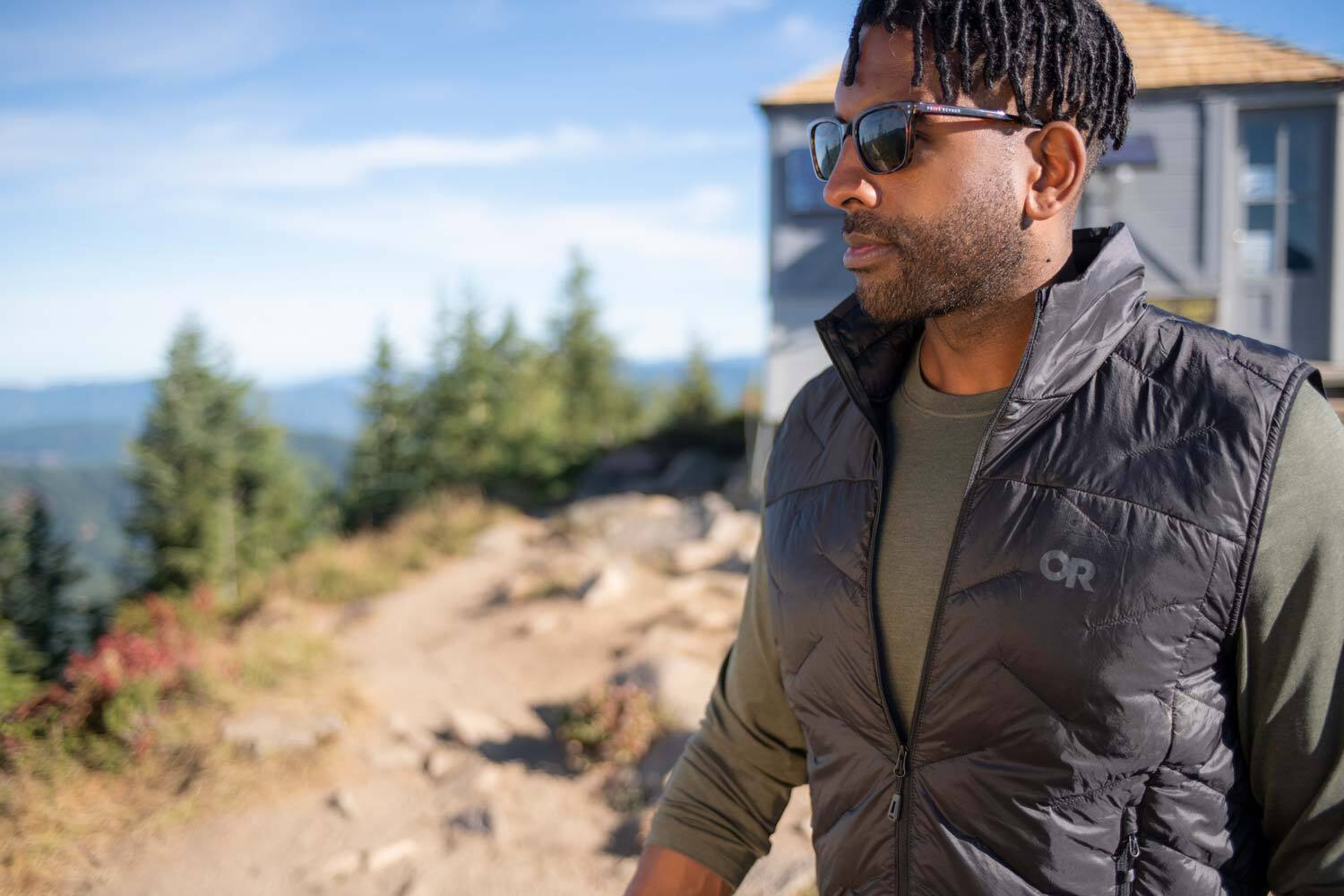
● Drying – If your jacket uses loose-fill insulation, tumble dry, as you would with down on low heat with a couple of tennis or dryer balls to break up clumps. Air drying works fine for Sheet and Active Insulation.
● Restoring Water Repellency – When water stops beading on the fabric, refresh the DWR coating. Wash with a treatment designed for insulated clothing and heat-set on low to activate.
● Storage – Store completely dry. While synthetics tolerate compression better than down, long-term storage in a stuff sack can still flatten fibres. For best results, hang the jacket or store it loosely in a cool, dry place.
● Use & Repairs – Protect your jacket from abrasion by wearing a tougher shell in rough terrain. Patch any tears quickly with gear tape to prevent damage from spreading and to keep insulation in place.
Bottom line: Synthetic jackets are durable and forgiving compared to down, but regular light maintenance will help them stay warm and comfortable for years.
Conclusion
Ultralight synthetic jackets are a staple for hikers, climbers, and outdoor enthusiasts, especially in wet, unpredictable weather. Modern materials make them warm for their weight, wind- and water-resistant, and highly packable. Today’s synthetic insulations range from breathable active layers to lofty down-like puffies, letting you choose based on activity and climate.
We covered how synthetic insulation works, why weight matters for warmth, key features to match your needs, and how synthetics compare to down. Neither is universally “best”: synthetics excel in damp conditions and easy care, while down wins for maximum warmth-to-weight in dry cold.
For three-season hiking in the UK, alpine climbing in variable weather, synthetics are often the go-to. They handle rain, sweat, and technical demands with features like helmet hoods, harness-compatible pockets, and durable shells.
With these points in mind, you can pick the ideal ultralight synthetic jacket for your adventures, from icy peaks to misty forests.
 |
||
 |
||
| Andy Neil |
||
|
Andy has been a keen long-distance hiker and wild camping enthusiast since he completed the Cleveland Way in 2015. Since then, he has walked thousands of trail miles all over the UK and is an active member of the Wild Camping UK community, being an admin of the largest wild camping community on Facebook. He strongly advocates for responsible wild camping and believes it is important to leave no trace when camping in the wilderness. He joined the UOG team in 2021 and works as a website developer and content creator. |
||
This guide focuses on ultralight synthetic insulated jackets for hiking, backpacking, and mountaineering. We’ll break down the types of synthetic insulation available, how to judge a jacket’s warmth, what features to look for, how synthetic compares to down, and tips on care and maintenance. By understanding these factors, you can choose the best ultralight synthetic jacket to keep you warm and dry on your adventures. Modern synthetic insulation comes in a few different forms, each engineered for specific performance characteristics.

